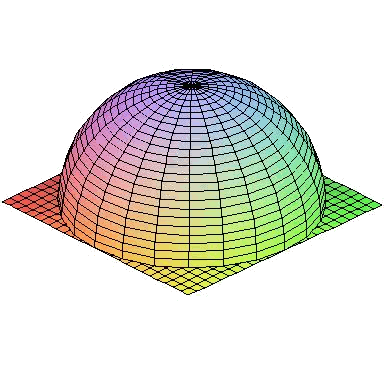As with what it is done with Green's theorem, we will use a powerful tool of integral calculus to calculate volumes, called the theorem of divergence or the theorem of Gauss.
This theorem says that if we have a solid
where, if
Let's remember that to calculate the first term, if
where
Therefore, if we find a field whose divergence is equal to
The most typical fields that satisfy what we need are:
Example
For example, we are going to calculate the volume delimited by half a sphere and the equatorial plane, which is:

From Gauss’ theorem, we can integrate one of the fields given along the surface that closes the volume up.
We will use the following parametric form, using spherical coordinates:
Let's calculate the vectors and the vector product:
Taking the vector field
Now we must integrate the same field on the low lid since the theorem is valid for closed surfaces. A parametrization of the circle is:
Let's calculate also the vectors and its vector product:
Now, we have:
Therefore,
